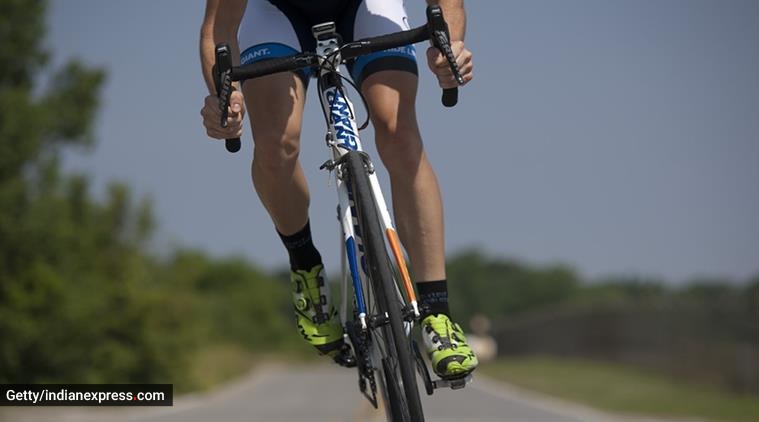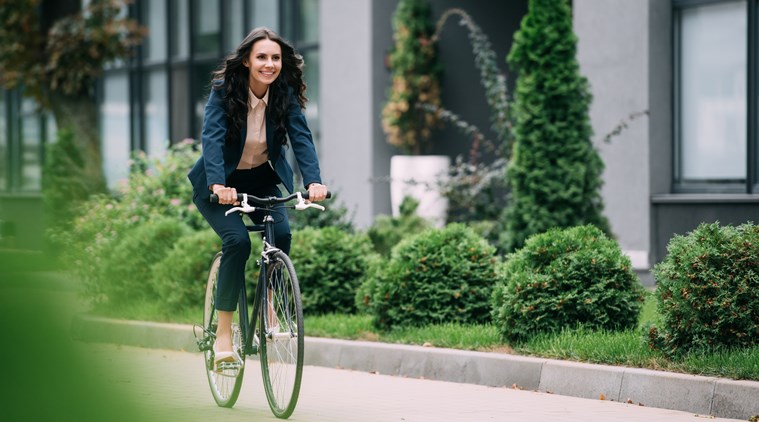From health to environment: Here’s why you should consider cycling

‘Cycle to Work’ must be the new health mantra. Find out why it matters in a post-pandemic world.

The novel coronavirus has not only overwhelmed healthcare systems across the world, it has also left governments grappling to find ways to ensure social distancing measures. As we gradually lift restrictions after weeks of lockdown, the worry now is how to get people out again without significantly raising the risk of spreading disease. Amid all these deliberations, the humble cycle is emerging as a viable solution not only because it would keep people away from crowded public transport but also because it would help us retain some environmental gains made during the lockdown, mentioned Dr Amit Bhushan Sharma, cardiologist, Paras Hospital. Not to forget the physical fitness benefits.
In an advisory, the World Health Organisation (WHO) has advocated increasing cycling and walking to limit physical contact to slow down the pandemic. The global health body said this will ensure physical distancing while helping meet the minimum requirements for daily physical activity at a time of increased tele-working and limited access to sport and other recreational activities.
Good morning ?♀️ #newnormal #newroutine #cycling
A post shared by Karishma Tanna (@karishmaktanna) on
‘Cycle to work’ gathers steam worldwide
France is actively considering implementing this advice into action. It plans to encourage people to cycle more after restrictions are eased. A number of cities across the world are turning roads into biking lanes because of the coronavirus threat. Bogota has turned 100 km of city streets into bike lanes to ease overcrowding on public transport and contain the disease spread. With public transport already witnessing a major drop in ridership, Berlin, Mexico City, Budapest, Vancouver and Milan are also considering similar plans to reallocate road space from cars to cyclists and pedestrians. As India prepares its post-lockdown strategy, it is important that the above examples are taken into consideration.
Cycling as a disease containment measure
In a densely populated country like India, public transport systems are the lifeline of many cities. Mumbai local trains carry more than 7.5 million people daily. The average daily ridership of Delhi’s DTC and private buses was estimated at an average 32 lakh in December 2019, while that of Delhi Metro was estimated at 24 lakh. Make no mistake, the virus is here to stay for the foreseeable future. Until we have a vaccine in the market, we will need to learn to live a curtailed life of social distancing. As restrictions are getting lifted, workplaces have started calling a section of their workforce to offices while a number of people need to step out for other basic necessities.
How will people commute in this scenario?
Maintaining social distancing on public transport is possible only if authorities plan to run the systems at significantly reduced capacity – say just 15-20 per cent and educate people about keeping distance with other passengers. Cycles are the easiest and most affordable option on the block, particularly for people whose workplaces are within five kilometres of their homes.

Cycling for physical exercise
A number of people who depend on gymnasiums or group fitness activities such as yoga, Pilates, or zumba, have suddenly been deprived of their fitness regimens. A number of others have turned excessively sedentary as they work from home and stay indoors. There is a wide ranging concern that this change in lifestyles will give rise to health challenges that arise out of lack of physical activity. Many people would add undesirable pounds to their bodies, some pre-diabetics may turn diabetic, some people may become hypertensive.
The increased risk of cardiovascular disease is another major concern, so is the risk of heart disease worsening in patients who are unable to meet their daily exercise goals. Cycling is a wonderful aerobic exercise with multiple benefits for health and fitness. For people restricted by requirements of social distancing, this under-rated physical exercise might have high utility.
The aerobic workout provided by a cycle is extremely beneficial for the health of the heart, brain as well as blood vessels. A study published in the American Heart Association’s journal Circulation concluded that adults aged 50-65 years who regularly cycled to work or for leisure had between 11-18 percent fewer heart attacks over a course 20 years.
Cycling helps reduce weight besides building stronger muscles, particularly in the lower half of the body. Importantly, cycling is also a joint-safe exercise in that it doesn’t put any weight on the joints. People must therefore consider giving up cars and embracing the cycle to fulfill their daily needs.
Cycling to ensure environmental health
If there was one positive that could be drawn out of the COVID 19 pandemic, it is the environmental clean-up resulting from the lockdown. Many of us want to retain some of these environmental gains even as we want to return to active lives. Giving up cars for cycles for short and medium journeys can help us keep the clean blue skies even after the lockdown.
? The Indian Express is now on Telegram. Click here to join our channel (@indianexpress) and stay updated with the latest headlines
For all the latest Lifestyle News, download Indian Express App.
Source: Read Full Article


